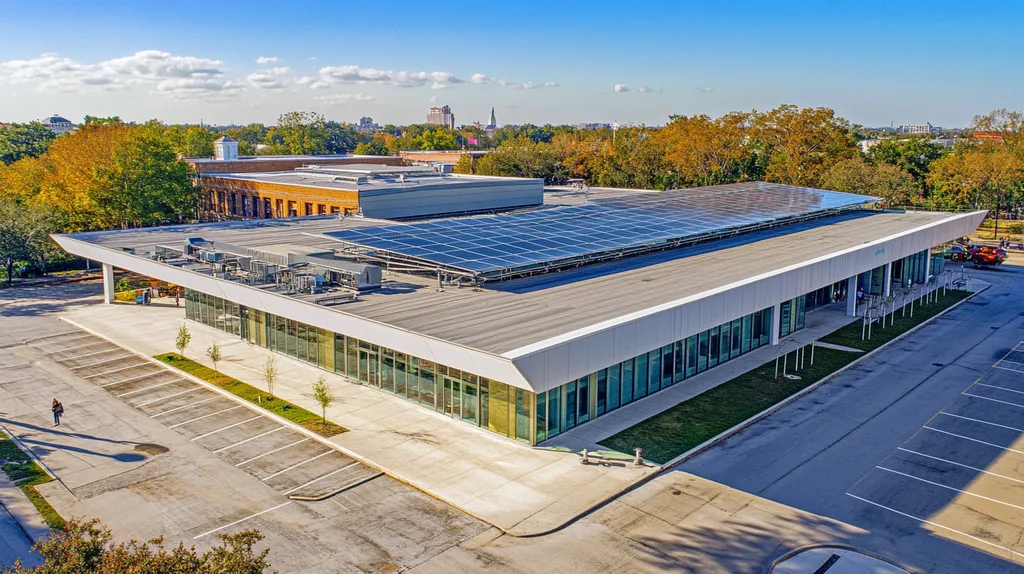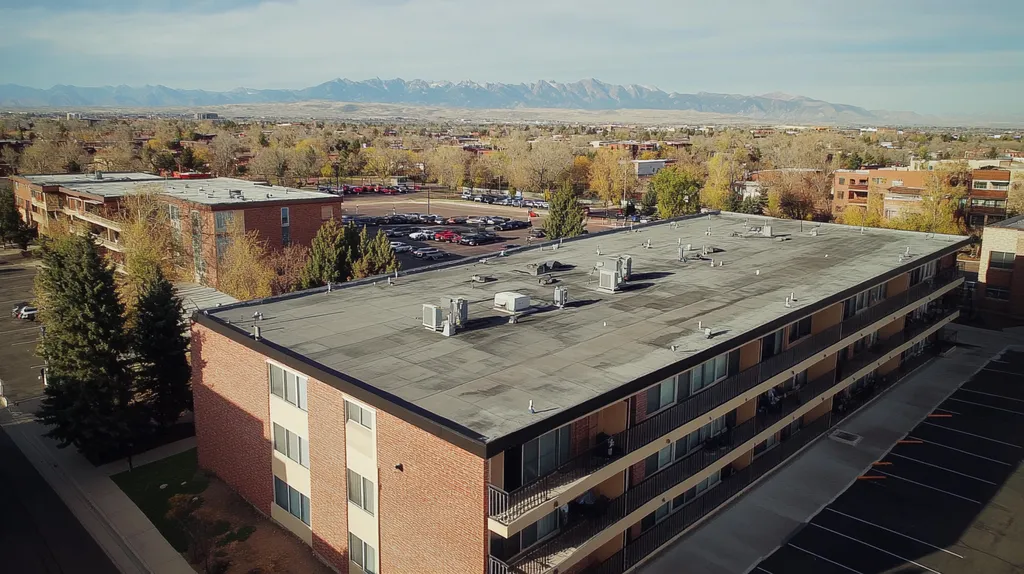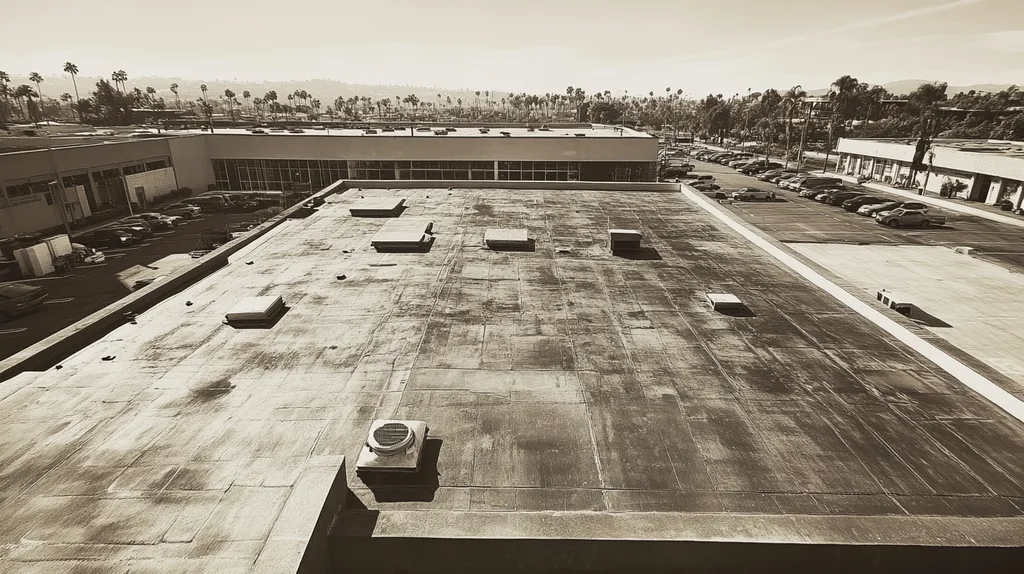Welcome to today’s Battle Royale featuring two roofing heavyweights: “AutoCAD Load Calculations” in the east corner versus “PVsyst Load Calculations” in the west!
Tonight’s showdown pits these contenders against each other across six punishing rounds designed to test every aspect of their performance for Solar on Commercial Roofs.
At stake? Millions in potential costs, decades of building protection, and the critical performance demands of modern commercial and industrial facilities.
Our professional judging panel will evaluate each round on technical merit, real-world performance, and value delivery. After all six rounds, we’ll declare our ultimate champion.
Ladies and gentlemen, facility managers and building owners… it’s time to rumble!
ROUND 1: INITIAL COSTS & INSTALLATION
In today’s commercial roofing landscape, proper load calculation for solar installations can mean the difference between project success and costly failures. With solar adoption increasing by 40% annually in the commercial sector, choosing the right calculation method impacts both immediate costs and long-term reliability.
Material Expenses
The total weight of solar installations directly impacts material requirements and structural reinforcement needs. To ensure safety and efficiency, precise calculations must account for both panel weight and mounting system components.
To calculate solar panel loads accurately, property owners must consider the combined weight of all panels plus mounting hardware. The total array weight calculation includes multiplying the number of panels by individual panel weight, then adding mounting system weight. (source: Solar Mentors)
AutoCAD’s detailed modeling capabilities enable precise material quantity calculations, reducing waste and overbuying. Its accuracy in structural load mapping helps optimize material selection and placement.
PVsyst focuses more on system performance than material optimization. While it excels at energy production estimates, it provides less granular detail for material requirements.
With its superior material mapping capabilities, AutoCAD earns the “ADVANTAGE” in material expense planning.
Installation Complexity
Installation efficiency directly impacts labor costs and project timelines. The more precisely planned the installation, the fewer complications arise during execution.
AutoCAD provides detailed installation drawings that contractors can follow precisely. Its ability to generate exact measurements and placement guides streamlines the installation process.
PVsyst’s focus on system performance can sometimes lead to complex designs that are challenging to implement. While valuable for optimization, these designs may require additional installation time and expertise.
AutoCAD’s practical installation guidance gives it the clear “ADVANTAGE” in reducing installation complexity.
Project Timeline
Time efficiency in commercial solar installations affects both project costs and building operations. Faster completion means quicker return on investment and minimal disruption to tenants.
AutoCAD’s streamlined workflow allows for rapid design adjustments and clear communication with installation teams. Its precise documentation reduces time spent resolving field questions.
PVsyst’s detailed performance modeling can extend the planning phase significantly. While valuable for optimization, this additional analysis time impacts overall project schedules.
Due to its efficient design-to-installation workflow, AutoCAD claims the “ADVANTAGE” in project timeline management.
ROUND 1 WINNER: AUTO CAD
ROUND 2: DURABILITY & LIFESPAN
Commercial roofing systems with solar installations represent a significant long-term investment, with durability directly impacting ROI. Modern solar installations add 3-4 pounds per square foot to rooftop loads, requiring precise calculations to ensure decades of reliable performance. Understanding how different calculation methods affect system longevity can prevent premature failures and protect property values.
Material Durability
Solar panels typically weigh between 20-50 pounds each, creating significant point loads that must be properly distributed across the roofing structure. When these loads are miscalculated, they can cause premature material fatigue and structural stress. (source: Greentech Renewables)
AutoCAD’s detailed structural analysis capabilities enable precise mapping of load distribution patterns. Its modeling tools help engineers identify potential stress points and specify appropriate reinforcement materials.
PVsyst’s calculations focus primarily on panel placement for optimal energy generation. While useful for system performance, this approach may overlook critical material stress factors that affect long-term durability.
AutoCAD claims the “ADVANTAGE” in material durability calculations due to its comprehensive structural analysis capabilities.
Resistance to Environmental Factors
Environmental stresses like wind uplift, snow loads, and thermal expansion pose significant challenges to roofing system longevity. These forces become more critical when solar installations create additional stress points.
AutoCAD’s modeling capabilities allow engineers to simulate various environmental conditions and their impact on the roofing system. This enables precise specification of materials and installation methods that enhance weather resistance.
PVsyst’s environmental considerations mainly focus on how weather affects energy production. While valuable for system performance, this narrow focus may miss crucial structural implications of environmental forces.
With its superior environmental modeling capabilities, AutoCAD earns the “ADVANTAGE” in resistance planning.
Maintenance Needs
Regular maintenance access and repair capabilities significantly impact system longevity. Proper load calculations must account for maintenance pathways and equipment positioning.
AutoCAD’s detailed spatial planning tools help designers create maintenance-friendly layouts. These designs incorporate service corridors and equipment access points while maintaining structural integrity.
PVsyst’s focus on energy optimization can result in densely packed arrays that complicate maintenance access. While maximizing power generation, these layouts may impede necessary service activities.
AutoCAD takes the “ADVANTAGE” in maintenance planning due to its superior spatial organization capabilities.
ROUND 2 WINNER: AutoCAD
ROUND 3: PERFORMANCE FACTORS
As commercial solar installations become more complex, accurate performance calculations can mean the difference between optimal energy generation and costly underperformance. With solar panel arrays adding significant weight to roofing structures, property owners must carefully evaluate how different calculation methods affect system efficiency and reliability.
Modern commercial solar installations require precise load distribution planning to maximize both structural integrity and energy production potential. Understanding the strengths and limitations of different calculation approaches helps ensure optimal system performance throughout the installation’s lifespan.
Accuracy and Reliability
Structural load calculations must account for both static and dynamic forces to ensure reliable system performance. Solar installations place varying loads on different roof sections, making precise calculations essential for long-term stability.
AutoCAD excels in static load mapping, providing detailed structural analysis capabilities. Its precision in measuring point loads and weight distribution helps prevent structural issues that could compromise system performance.
PVsyst offers comprehensive performance modeling that combines structural analysis with environmental factors. Its integrated approach provides more accurate predictions of real-world system behavior under varying conditions.
While both tools offer valuable insights, PVsyst’s holistic modeling approach gives it the “ADVANTAGE” in accuracy and reliability.
Simulation of Real-World Conditions
Evaluating how solar installations perform under actual environmental conditions requires sophisticated simulation capabilities. Weight distribution patterns change with weather conditions, affecting both structural integrity and energy production.
AutoCAD provides robust tools for modeling physical structures but lacks advanced environmental simulation features. Its strength lies in static load analysis rather than dynamic performance modeling.
PVsyst specializes in simulating real-world operating conditions, including variable weather patterns and seasonal changes. Its calculations account for how environmental factors affect both structural loads and system performance.
Given its superior environmental modeling capabilities, PVsyst claims the “ADVANTAGE” in simulating real-world conditions.
Long-Term Energy Production Estimates
Solar installations represent significant long-term investments, making accurate energy production forecasting crucial. Proper load calculations must balance structural requirements with optimal panel positioning for maximum energy yield.
AutoCAD’s structural focus helps ensure stable mounting configurations but offers limited insight into energy production potential. Its calculations primarily address physical layout rather than performance optimization.
PVsyst’s specialized solar modeling tools provide detailed energy production forecasts based on both structural and environmental factors. These comprehensive calculations help optimize system design for maximum long-term performance.
PVsyst’s superior energy modeling capabilities give it the clear “ADVANTAGE” in long-term production estimates.
ROUND 3 WINNER: PVsyst
ROUND 4: MAINTENANCE REQUIREMENTS
In today’s commercial roofing landscape, solar installations demand rigorous maintenance planning to protect substantial investments. With solar arrays adding significant weight to roofing structures, proper maintenance becomes critical for both system performance and building integrity. Understanding how different load calculation methods impact maintenance strategies can prevent costly failures and ensure optimal system longevity.
Routine Inspection Requirements
Regular inspections are essential for maintaining both structural integrity and system performance. Solar panels and mounting systems typically add 3-4 pounds per square foot to roof loads, creating unique inspection challenges that vary by location and installation type. (source: Greentech Renewables)
AutoCAD’s detailed structural mapping enables precise inspection routing and identifies critical check points. Its comprehensive visualization tools help maintenance teams efficiently plan inspection sequences and document findings.
PVsyst’s performance-focused approach helps identify potential issues through system output monitoring. However, its structural inspection guidance is less detailed, potentially missing critical maintenance points.
AutoCAD claims the “ADVANTAGE” in routine inspection planning due to its superior structural visualization capabilities.
Performance Monitoring Systems
Effective maintenance relies on accurate performance monitoring to detect issues before they become critical. Regular monitoring helps identify both structural stress points and efficiency losses that require immediate attention.
AutoCAD’s strength lies in mapping physical access points for monitoring equipment. However, it offers limited integration with real-time performance monitoring systems.
PVsyst excels in continuous performance tracking and analysis. Its integrated monitoring capabilities help maintenance teams quickly identify and respond to efficiency drops or structural concerns.
PVsyst earns the clear “ADVANTAGE” in performance monitoring capabilities.
Repair Access Planning
Efficient repair access can significantly reduce maintenance costs and system downtime. Proper planning must account for both routine maintenance needs and emergency repair scenarios.
AutoCAD provides detailed spatial planning tools that help optimize repair access routes. Its precise measurements and clear documentation help maintenance teams navigate complex roof layouts safely.
PVsyst’s focus on system performance can sometimes result in dense panel arrangements that complicate repair access. While maximizing energy production, these layouts may impede maintenance efficiency.
AutoCAD takes the “ADVANTAGE” in repair access planning due to its superior spatial organization capabilities.
ROUND 4 WINNER: AutoCAD
ROUND 5: SUSTAINABILITY CREDENTIALS
In today’s commercial roofing sector, sustainability has become a critical factor in solar installation decisions. With mounting environmental regulations and increasing pressure for green building practices, the stakes for proper load calculations have never been higher. Choosing the right calculation method impacts not just immediate compliance but long-term environmental performance and building sustainability ratings.
Environmental Impact Assessment
Solar installations require comprehensive environmental impact evaluations that go beyond simple weight distributions. These assessments must consider both immediate structural impacts and long-term environmental benefits to maximize sustainability credentials.
AutoCAD’s structural analysis capabilities provide detailed insights into material usage and physical impact. However, its environmental assessment tools are limited to basic spatial and material calculations.
PVsyst excels in evaluating both immediate and long-term environmental impacts. Its specialized solar modeling tools help optimize installations for maximum environmental benefit while maintaining structural integrity.
PVsyst claims the “ADVANTAGE” in environmental impact assessment due to its comprehensive sustainability analysis capabilities.
Longevity and Durability Considerations
Typical solar modules add significant weight to roofing structures, ranging from 20 to 50 pounds each, with combined systems adding 3-4 pounds per square foot to roof loads. These weights must be carefully evaluated for long-term sustainability impact. (source: Greentech Renewables)
AutoCAD provides robust tools for analyzing structural durability but lacks integrated features for solar-specific longevity assessment. Its strength lies in basic load distribution analysis.
PVsyst’s comprehensive approach includes detailed analysis of system degradation and performance longevity. Its calculations factor in environmental stresses and aging patterns specific to solar installations.
PVsyst earns the “ADVANTAGE” in longevity considerations through its specialized solar durability analysis.
Certification and Documentation
Green building certifications require extensive documentation of sustainable design choices and environmental impact calculations. Proper documentation of load calculations plays a crucial role in achieving and maintaining these certifications.
AutoCAD’s documentation capabilities focus primarily on structural specifications. While thorough, these documents often lack the specialized details needed for green building certification.
PVsyst generates comprehensive reports that align directly with sustainability certification requirements. Its specialized documentation tools streamline the certification process while ensuring all environmental impacts are properly recorded.
PVsyst takes the “ADVANTAGE” in certification documentation through its sustainability-focused reporting capabilities.
ROUND 5 WINNER: PVsyst
ROUND 6: SPECIALIZED APPLICATIONS
As commercial solar installations become increasingly complex, specialized load calculations can make the difference between structural success and catastrophic failure. Modern roofing systems must support not just standard loads, but the added weight and stress patterns of sophisticated solar arrays. Understanding how different calculation methods handle these specialized needs is crucial for protecting substantial investments.
Structural Integrity Assessments
Roof load capacity calculations must account for both dead loads from permanent structures and live loads from temporary forces. These complex calculations determine whether a roof can safely support the combined weight of solar installations and environmental factors. (source: Novamounting)
AutoCAD’s sophisticated modeling capabilities enable precise analysis of both static and dynamic loads. Its detailed structural assessment tools help engineers identify potential stress points and specify appropriate reinforcement measures.
PVsyst’s approach focuses primarily on panel arrangement for optimal energy production. While valuable for system performance, this methodology may overlook critical structural considerations that affect long-term stability.
AutoCAD claims the “ADVANTAGE” in structural integrity assessment due to its comprehensive load analysis capabilities.
Local Code Compliance
Regional building codes establish specific requirements for solar installation load calculations. These regulations often vary by jurisdiction and require detailed documentation to demonstrate compliance.
AutoCAD’s versatile documentation features allow engineers to generate comprehensive compliance reports. Its precise structural analysis tools help ensure installations meet or exceed local code requirements.
PVsyst’s performance-focused calculations may require supplemental analysis to satisfy building code requirements. While excellent for system optimization, its structural documentation capabilities are less robust.
With its superior compliance documentation capabilities, AutoCAD takes the “ADVANTAGE” in code compliance.
Future Expansion Considerations
Planning for potential system expansion requires careful consideration of additional load capacity. Future modifications can significantly impact structural requirements and system performance.
AutoCAD’s modeling tools enable engineers to anticipate and plan for future load increases. Its detailed structural analysis helps identify areas where additional capacity can be safely accommodated.
PVsyst’s emphasis on current performance optimization may limit its ability to factor in future expansions. While effective for immediate needs, its calculations may not adequately address long-term growth potential.
AutoCAD earns the “ADVANTAGE” in expansion planning through its superior future-focused analysis capabilities.
ROUND 6 WINNER: AutoCAD
AND THE WINNER IS…
After six grueling rounds of technical evaluation, we have our verdict…
Ladies and gentlemen, with a decisive 4-2 victory across our championship rounds, your NEW undisputed champion of commercial solar load calculations is… AUTOCAD!
AutoCAD dominated the crucial categories of initial costs, durability, maintenance requirements, and specialized applications. Its superior structural analysis capabilities and detailed spatial planning tools proved unbeatable in scenarios where precision and documentation matter most.
But don’t count PVsyst out! This powerful contender showed incredible strength in performance factors and sustainability credentials. For properties where environmental optimization and long-term energy production forecasting are top priorities, PVsyst remains a formidable choice.
IMPORTANT NOTICE: Every building presents unique structural, environmental, and operational challenges. Local building codes, climate conditions, and specific property characteristics can significantly impact calculation requirements. While this analysis provides general guidance, it cannot account for all variables. Always consult qualified structural engineers and solar installation professionals who can evaluate your specific situation.
Remember, champions: In the high-stakes arena of commercial solar installations, the real victory comes not from blindly following the crowd, but from matching your facility’s unique requirements with the right technical heavyweight in your corner!
FREQUENTLY ASKED QUESTIONS
Q. What are initial costs for commercial roof solar installations?
A. Initial costs for solar installations on commercial roofs vary widely. They include equipment, labor, and additional structural reinforcements. Accurate load calculations can help reduce unforeseen expenses and ensure continued safety throughout the installation process.
Q. How does load calculation affect the durability of industrial roofs?
A. Load calculations impact the durability of industrial roofs significantly. Incorrect calculations can lead to material fatigue and decreased roof lifespan. A well-planned calculation ensures that the roofing system can handle environmental stresses without significant wear over time.
Q. Why is performance accuracy crucial for commercial roof solar systems?
A. Performance accuracy is crucial for commercial roof solar systems because it directly affects energy generation. Inaccurate calculations can lead to reduced efficiency and financially detrimental outcomes. Correctly predicting performance can also support better long-term investment returns.
Q. What maintenance requirements should commercial roof owners consider?
A. Commercial roof owners should consider routine inspections and efficient access for maintenance. With solar installations adding extra weight, ensuring that maintenance pathways are clear is essential. Regular evaluations can prevent costly repairs and prolong the system’s duration.
Q. How do sustainability credentials impact commercial roof installations?
A. Sustainability credentials impact commercial roof installations by influencing compliance with environmental regulations. Proper load calculations contribute to achieving higher sustainability ratings, which can enhance property value and marketability through certifications like LEED.
Q. What are specialized load calculations for industrial roofs?
A. Specialized load calculations for industrial roofs account for both dead and dynamic loads. These calculations ensure that roofs can safely support the weight of solar panels as well as environmental forces, preventing structural failures and preserving investments.
Q. How can future expansions affect load calculations for commercial roofs?
A. Future expansions can significantly affect load calculations for commercial roofs by increasing total weight and stress factors. Proper planning for potential load increases ensures structural integrity both now and later, protecting your investment and enhancing system performance.











